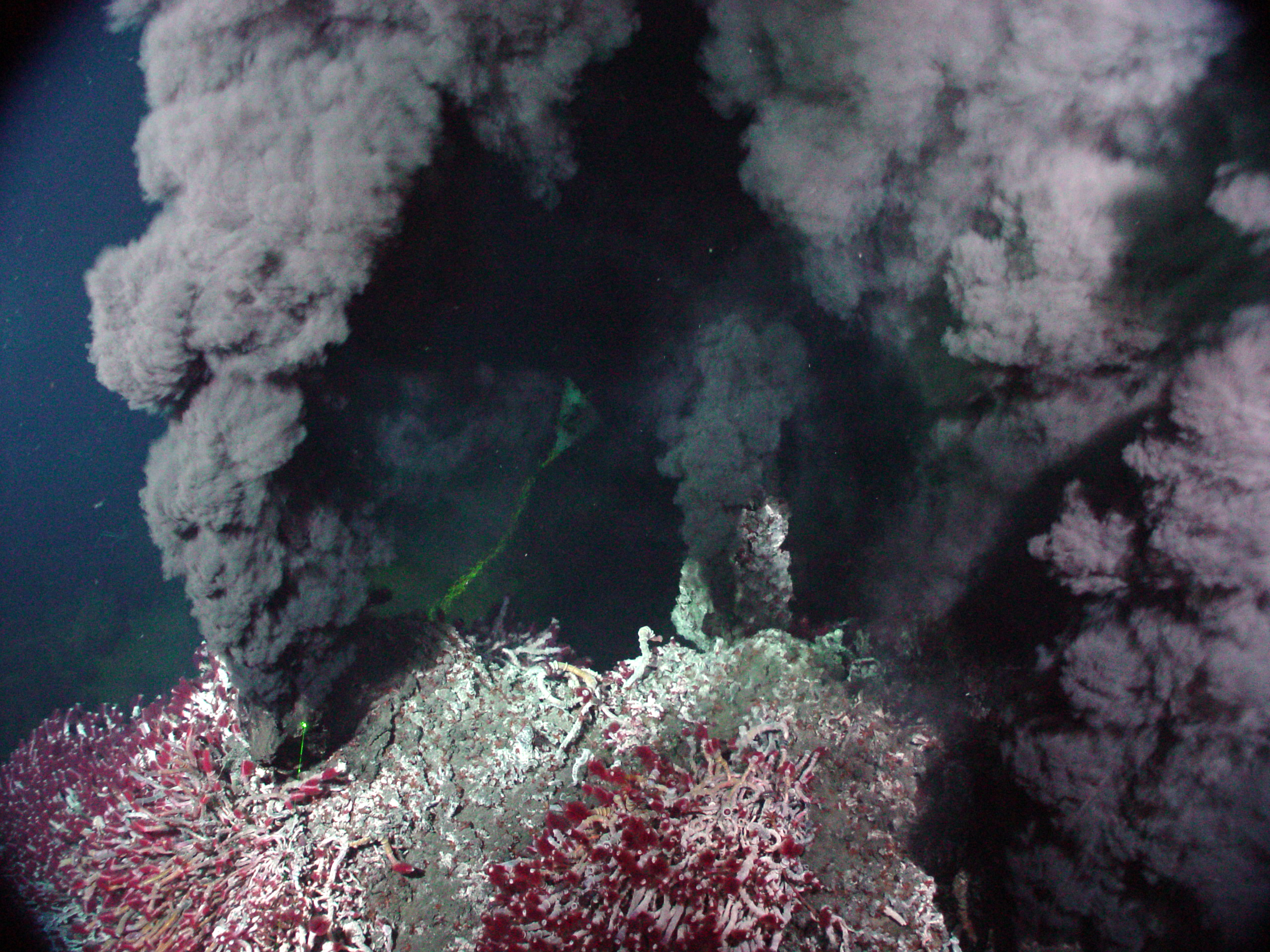Black Smokers

are hydrothermal vent structures that discharge hot, dark fluids from the ocean floor. They generally form near areas with submarine volcanic activity, such as mid-ocean ridges, where hydrothermal fluids circulate through the oceanic crust and exchange elements with the surrounding rocks. As these hot fluids come into contact with the much colder seawater, the dissolved minerals precipitate into particles and may form spectacular chimney-like structures.
Black smokers are known to exist in Atlantic and Pacific Oceans, at an average depth of . The deepest one found was at a depth of .
What would be the gauge pressure (in Pascal) at a deep vent?
Details and Assumptions:
-
Assume the density of ocean does not vary with depth.
-
Take .
-
Take the density of ocean as .
-
The gauge pressure at a point is the amount by which the pressure at the point exceeds the atmospheric pressure.
Relevant article: Black Smokers .
The answer is 3E+7.
This section requires Javascript.
You are seeing this because something didn't load right. We suggest you, (a) try
refreshing the page, (b) enabling javascript if it is disabled on your browser and,
finally, (c)
loading the
non-javascript version of this page
. We're sorry about the hassle.
i.e. Gauge Pressure = P − P o = ρ g h
where, P is absolute pressure at certain depth, P o is atmospheric pressure and ρ is the density of ocean and g and h carry their obvious meanings.
Gauge Pressure = P − P o = ( 1 × 1 0 3 kg m − 3 ) ⋅ ( 1 0 ms − 2 ) ⋅ ( 3 0 0 0 m ) = 3 × 1 0 7 Pa